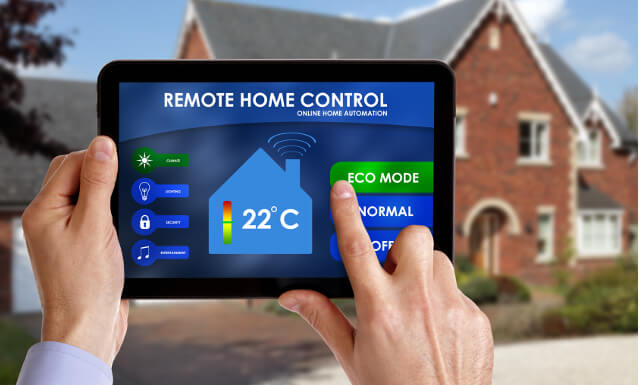Rotary dial thermostats are outdated. Modern heating automatically adapts to your lifestyle, with simple installation.
Regulating a heater can be annoying. In winter, temperatures sometimes fluctuate considerably, meaning heating settings must be adjusted accordingly every day. Many households already have temperature sensors that control the radiators in the room, ensuring a constant room temperature. Solutions of this kind have existed for decades, but they have one drawback – they do not respond to what is happening in the room or the house as a whole. They don‘t allow users to intervene manually and heat rooms during the day or night, or when no one is home.
The advantages of intelligent heating
A smart heating system can do a lot more than this. In the morning, it can make sure the kitchen is nice and warm, but what if you don’t need to use the living room until the afternoon? Not a problem, as via a smart heating app, this can be easily set to adapt to your daily or weekly needs. An intelligent heating system ensures the right room temperature at the right time, in the right place. Thanks to additional window contact sensors, smart heating will also detect when the room is being ventilated. A heater with a simple temperature sensor will counter-regulate to maintain the temperature, thus wasting valuable energy. A smart heater, on the other hand, knows not to, saving heating costs as a result.
What happens in a smart heating system?
This is where the technology of the Internet of Things comes into play. Sensors in the house, such as thermometers or humidity sensors, collect information that is then evaluated by the system or an app. Whilst in use, more and more information is collected so the system gets to know the thermal properties of the building; how fast a room heats up, for example. Over time, they become better at determining the optimal time to heat up, such as ensuring it’s warm at 6pm in the living room. Some components even calculate the weather forecast for the next day. Because it can be expanded with additional components, smart heating is also great for households with an irregular daily routine. For example, a motion sensor could be installed in the hallway to recognise when someone comes home unusually early, to heat up the house before the set time. Some systems can detect homeward occupants even earlier, based on the location of their smartphones.
Retrofit at any time
Intelligent retrofitting refers to all heating systems that work with radiators, including rotary thermostats. Technically outdated heating systems include coal and wood stoves, for example. Interestingly, smart heating is great not only for homeowners, but also for those who rent properties. This is because heating system upgrades are reversible. If you need to move house and extract the heating system, the old thermostats can be easily re-attached and the intelligent thermostats installed in your new place.
Smart heating news
Honeywell Lyric T6: Smart heating sensor for a perfect indoor climate
Smart heating control: Retrofitting older heaters with the PT32 WiFi
How to: Smart heating
Smart heating with Homematic: How it works














